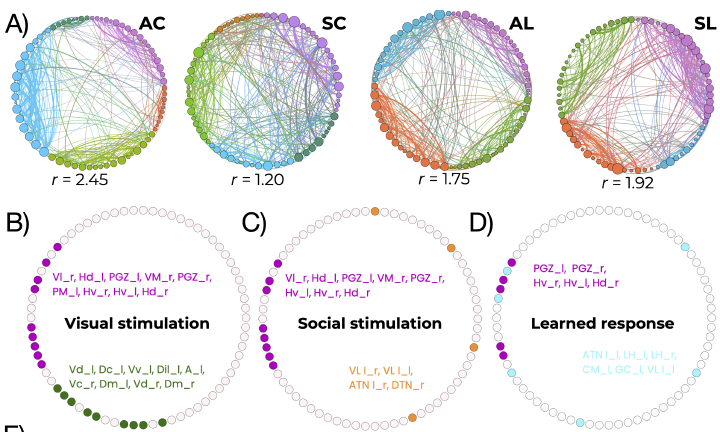Social and asocial learning in zebrafish are encoded by a shared brain network that is differentially modulated by local activation

Abstract
Group living animals can use social and asocial cues to predict the presence of a reward or a punishment in the environment through associative learning. The degree to which social and asocial learning share the same mechanisms is still a matter of debate, and, so far, studies investigating the neuronal basis of these two types of learning are scarce and have been restricted to primates, including humans, and rodents. Here we have used a Pavlovian fear conditioning paradigm in which a social (fish image) or an asocial (circle image) conditioned stimulus (CS) have been paired with an unconditioned stimulus (US=food), and we have used the expression of the immediate early gene c-fos to map the neural circuits associated with social and asocial learning. Our results show that the learning performance is similar with social (fish image) and asocial (circle image) CSs. However, the brain regions involved in each learning type are distinct. Social learning is associated with an increased expression of c-fos in olfactory bulbs, ventral zone of ventral telencephalic area, ventral habenula and ventromedial thalamus, whereas asocial learning is associated with a decreased expression of c-fos in dorsal habenula and anterior tubercular nucleus. Using egonetworks, we further show that each learning type has an associated pattern of functional connectivity across brain regions. Moreover, a community analysis of the network data reveals four segregated functional submodules, which seem to be associated with different cognitive functions involved in the learning tasks: a generalized attention module, a visual response module, a social stimulus integration module and a learning module. Together, these results suggest that, although there are localized differences in brain activity between social and asocial learning, the two learning types share a common learning module and social learning also recruits a specific social stimulus integration module. Therefore, our results support the occurrence of a common general-purpose learning module, that is differentially modulated by localized activation in social and asocial learning.